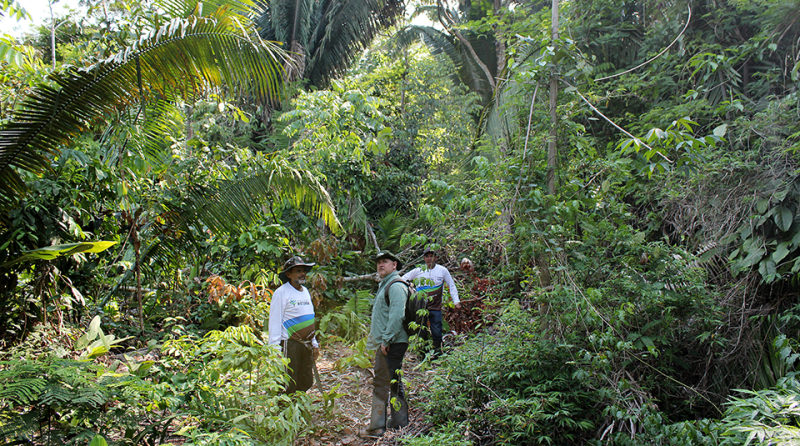
On paper, Brazil should be one of the most attractive markets for carbon offsetting projects. The vast majority of carbon sequestration projects will come through forestry and re-forestry projects and the country offers huge scale and opportunity for both protecting and re-growing two types of forest biomes – the Amazon and the Atlantic.
Market participants have welcomed the evolution of the structure of the voluntary carbon offsetting market. The Taskforce on Scaling Voluntary Carbon Markets (TSVCM), led by former governor of the Bank of England Mark Carney, aims to encourage this growth by adding transparency around the rules and prices of such schemes. This rules and systems-based approach to carbon offsetting credits will allow greater corporate adoption of the tool as more seek to achieve carbon neutrality objectives.
André Vivan de Souza, partner at Brazilian law firm Pinheiro Neto, says he has seen investors anticipate the Taskforce’s final report, which was published on Wednesday, with renewed interest in carbon offsetting projects in Brazil.
“We are seeing growing interest in forestry projects linked to carbon offsetting, although most of the recent activity has been from people coming to try and start further issuance of credits for active projects or restart old projects that were shelved because the economics based on the sale of carbon offsetting credits was not favourable,” he says.
Restrictions
However, activity will likely be restricted by a Brazilian law that prevents foreigners buying or renting rural land. “The 1971 law was designed to avoid ownership [of land by foreigner] and so title is restricted from international investors either through direct investment or through any sort of legal entity, fund or other vehicles that aren’t majority-owned and staffed by Brazilian nationals,” says Fábio Rocha Pinto e Silva, also a partner at Pinheiro Neto. “International investors also cannot rent rural land – the law is quite restrictive.”
However, he adds that one option is the use of ‘usufruct’ or ‘surface rights’, whereby international investors can receive a temporary interest on the land – and these can be long-term contracts, often around 30 years. “For the duration of the agreement, it grants very similar rights to ownership from a practical perspective,” he says.
“We have worked on REDD+ [the UN reducing emissions from deforestation and forest degradation initiative] carbon projects for international clients that have been based on usufruct rights and they have had no problems in persuading carbon offsetting auditors that they are permanent – so there is no difference between a project owned by a Brazilian or foreigner in terms of the reversibility of these schemes,” agrees Pinheiro Neto's Vivan de Souza.
TSVCM predicts the industry could be worth $50bn by the end of the decade and head Mark Carney (below) believes it could be double that

However, this interpretation isn’t endorsed by Verra chief executive, David Antonioli. Verra is one of the leading entities that audits and issues voluntary carbon offsetting credits. While Antonioli believes the Taskforce’s proposals are a step forward for the global growth of the industry, his views on the specific suitability of usufruct structures pours cold water on the future of foreign-based offsetting projects.
“Verra believes emissions reductions must last for at least 100 years to be considered permanent, so projects with planned activities or contractual agreements to land that are less than 100 years will have higher risk ratings and will need to deposit more of their verified emission reductions into pooled buffer accounts over time,” he says. “Projects may recover the emission reductions deposited in the pooled buffer account over time by demonstrating a steady or decreasing risk rating, which is reevaluated at each verification.”
With so much uncertainty around the level of carbon offset credit supply and demand – and subsequently the future price of carbon – any structure that limits the issuance of credits is unlikely to see the light of day.
Partnerships
Mark Wishnie, former director of the Nature Conservancy’s global forestry programme and now chief sustainability officer and head of landscape capital at BTG Pactual Timberland Investment Group, says that Brazil’s legal framework has meant that international investors need to partner with local investors for commercial Brazilian timber projects.
“You need Brazilian capital for every investment of any size in rural land,” he agrees. “We typically make proprietary investments in our fund vehicles – that aligns interests and also contributes to the requirement for Brazilian capital.”
Wishnie says the demand for forestry projects has been growing in recent years as the projects are long term, are uncorrelated to other asset classes and can also have environmental, social and governance benefits that satisfy some investors’ investment criteria. However to date, Wishnie says none of his Brazilian forestry investments have been structured to deliver carbon offsetting credits, as the commercial nature of these projects means they don’t satisfy the key requirement for ‘additionality’.
“Trees are the only current carbon capture and storage mechanism that we have to deploy at scale, but the key is additionality – that you are doing something that wouldn’t have already happened – otherwise you are just giving someone [who buys the credits] a free pass,” says Wishnie.
According to the Ecosystem Marketplace, there were just $159.1 million of voluntary forestry and land use offsets transacted in 2019. Another source, the California Air Resources Board (CARB – for US forest projects only), adds a further 21.3 million offsets issued in 2019. Assuming an average price of $14 per metric tonne of carbon dioxide equivalent and also assuming that all offsets were sold in the year of issuance, CARB adds a further $299.3 million of offsets, leading to an annual total of $458.8 million transacted in 2019.
However, the Taskforce on Scaling Voluntary Carbon Markets predicts that the industry could be worth $50 billion by the end of the decade and Carney has said he believes that it could be double that.
